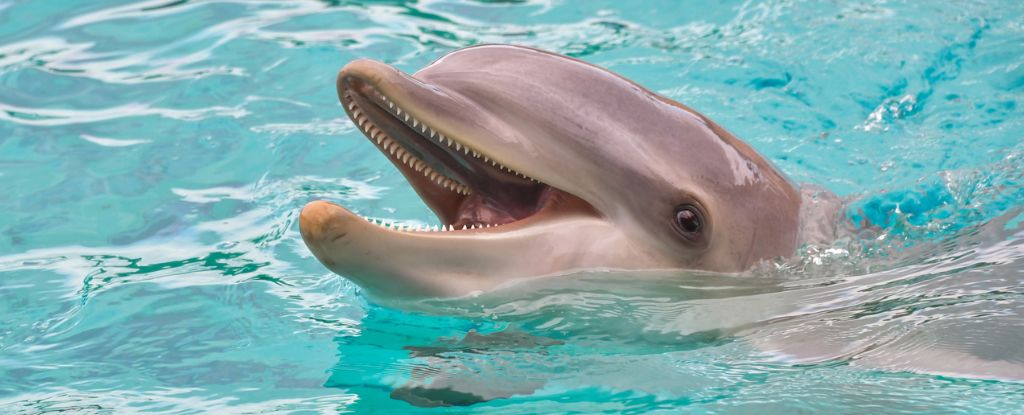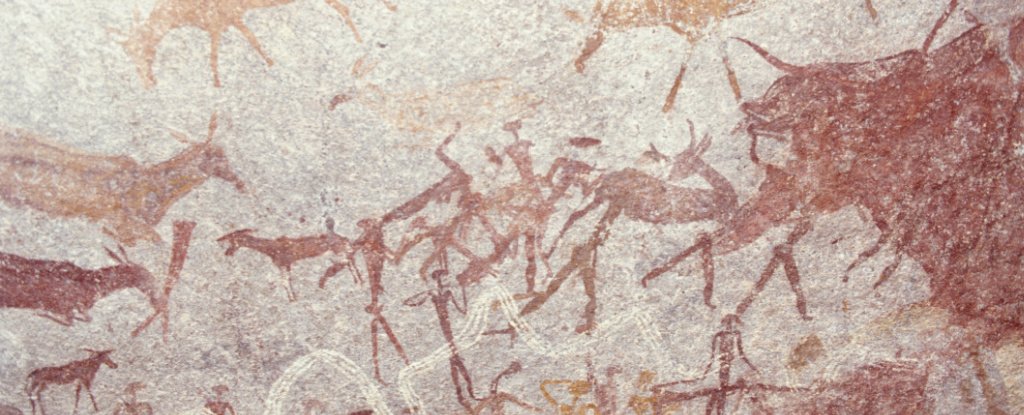Dolphins don’t just look like they’re smiling when they open their mouths. Some scientists think they actually are grinning at each other, and the expression seems to be contagious.
A relaxed, open mouth on a dolphin is open to human interpretation, and not everyone agrees this is a ‘smile’ as such. But researchers in Europe have now put forward evidence that suggests captive bottlenose dolphins (Tursiops truncatus) are using the expressions as friendly gestures.
During playfighting, researchers suspect that when a dolphin mimics another’s open mouth, the playmates are agreeing to a friendly interaction that could otherwise be misconstrued as aggressive.
If the team is right, it suggests that ‘laugh faces’ are playful expressions that have deep roots in mammal biology, not only on land but also in the sea.
“We’ve uncovered the presence of a distinct facial display, the open mouth, in bottlenose dolphins, and we showed that dolphins are also able to mirror others’ facial expression,” says evolutionary biologist Elisabetta Palagi from the University of Pisa in Italy.
“The relaxed open mouth, seen in social carnivores, monkeys’ play faces, and even human laughter, is a universal sign of playfulness, helping animals – and us – signal fun and avoid conflict.”
Previous evidence suggests that primates, horses, and wild and domestic dogs, also share relaxed, open-mouth expressions in the context of play, but this is the first study to suggest marine mammals do the same.
Bottlenose dolphins are known to be extremely playful at all ages, and while studies show language is a crucial part of their social interactions, their visual communication is relatively underexplored.
For their study, Palagi and her colleagues analyzed 80 hours of footage, showing 22 captive dolphins engaging in free play within four social groups. In the end, only one dolphin used an open mouth during solitary play. The vast majority of open mouths were employed during social play, like chasing or playfighting.
These are not aggressive encounters, because each dolphin gets a turn to chase, flee, play bite, or tap noses, and no one is intending to actually hurt the other.
If an open mouth is used to prevent a play bite, then it would be expected that a smile would often lead to a bite in retaliation. But that’s not what the scientists found.
Of all the open mouths tallied in the footage, nearly 90 percent were used when the dolphin’s face could be seen by their playmate, and a third of the time, the playmate grinned back within a second.
Even when a dolphin playmate didn’t return an open mouth gesture, the dolphin with the open mouth never proceeded to play bite.
What’s more, when dolphins showed actual aggression, the authors counted no open mouths in the footage.
frameborder=”0″ allow=”accelerometer; autoplay; clipboard-write; encrypted-media; gyroscope; picture-in-picture; web-share” referrerpolicy=”strict-origin-when-cross-origin” allowfullscreen>
The findings cannot completely rule out that dolphins use open mouths in other contexts, but the results do align with previous hypotheses that suggest laugh faces are friendly, social cues co-opted from the act of biting.
“The open mouth gesture likely evolved from the biting action, breaking down the biting sequence to leave only the ‘intention to bite’ without contact,” explains Palagi.
“This rate of mimicry in dolphins is consistent with what’s been observed in certain carnivores, such as meerkats and sun bears.”
The research was only conducted among captive dolphins, so it’s hard to say how the species might use open mouths in the wild.
From an adaptive perspective, however, switching from acoustic communication to visual communication could be an effective strategy during social play, when dolphins tend to be less vigilant against predators.
“Although we are far from understanding the evolutionary origins of play and the ability of animals to fine-tune their playful sessions, the pervasive presence of open-mouth signals and rapid mimicry in the mammal phylogenetic tree indicates the relevance of such visual mechanisms in shaping complex communication,” argue the team of researchers.
The study was published in iScience.





